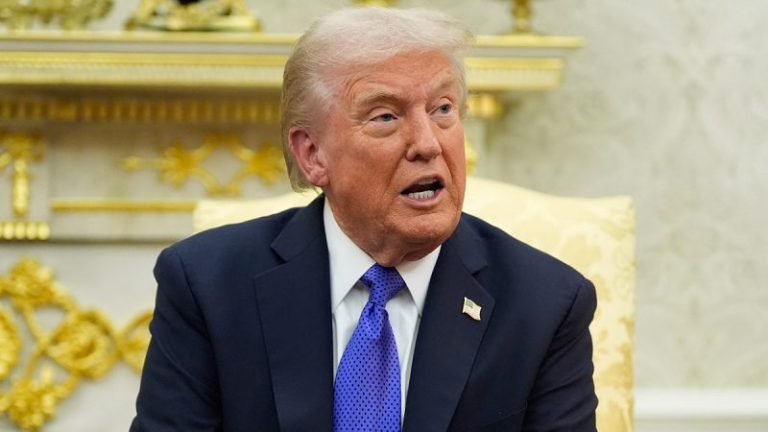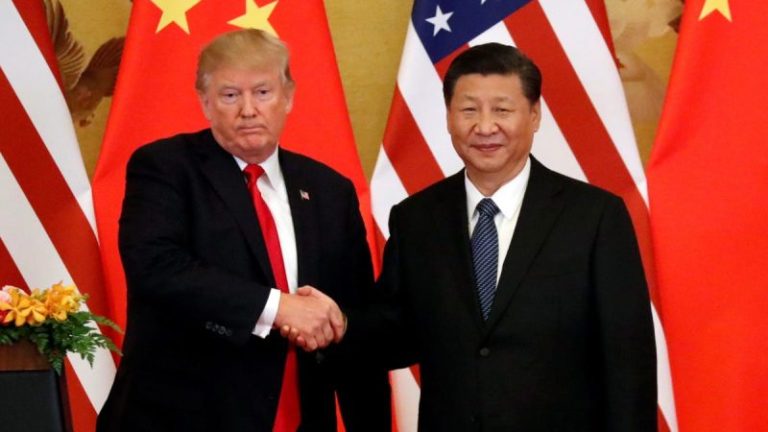For decades, the United States has fought the war on drugs as if it were exclusively a law enforcement issue. It never was. It has always had national security implications.
After years of inaction, drugs now kill more Americans each year than every modern war combined. Fentanyl alone claimed more than 100,000 lives in 2021, a number that continues to rise despite billions spent on interdiction, prevention and policing. That is not a criminal nuisance. That is a sustained mass-casualty event inside the homeland.
President Donald Trump’s new approach finally treats the crisis for what it is. By designating major drug cartels as foreign terrorist organizations and authorizing the use of military force against them, his administration has drawn a clear line between criminality and warfare.
The cartels are not ordinary traffickers. They are transnational powers that control territory, wield military-grade arsenals and use terror as a tool of governance. In Trump’s words, they are ‘the ISIS of the Western Hemisphere.’
The numbers already justify the policy. In the first weeks of operations, the new Homeland Security Task Force has arrested more than 3,200 gang and cartel members, seized 91 tons of narcotics and captured over 1,000 illegal weapons. Those seizures represent tens of thousands of American lives saved. Every boat stopped and every shipment intercepted means fewer overdose deaths, fewer funerals, and fewer communities shattered by addiction and violence.
For too long, Washington treated the cartels as criminals who could be prosecuted rather than enemies who had to be defeated. That approach failed. The cartels wage war on America for profit. They assassinate, extort and kidnap while basking in riches captured through intimidation and terror. They destabilize our neighbors and corrupt governments from Mexico to Venezuela. If America had the right to strike al Qaeda and ISIS abroad for killing Americans, it has an equal right to strike the cartels that kill Americans at home.
The legal foundation is clear. In February 2025, the State Department designated Tren de Aragua, Sinaloa, Jalisco Nueva Generación, MS-13 and others as Foreign Terrorist Organizations. A presidential determination in September formally declared that the United States is in a non-international armed conflict with these groups.
No court has challenged the policy because it aligns with both domestic and international law. When foreign networks deliberately kill American citizens, the president has not only the authority but the obligation to act.
The ethical case is equally strong. The Just War tradition requires a just cause, competent authority, proportionality and last resort. Every criterion has been met. The cause could not be more just when drug overdoses in the United States claimed more than 100,000 lives for a third consecutive year by 2023.
Years of law enforcement, education campaigns and international coordination have not slowed the killing. When nonviolent means have failed, the duty of a government is to protect its citizens by every lawful means available.
Each go-fast boat in the Caribbean and each semi-submersible in the Pacific carries more than cocaine or methamphetamine. It carries a body count of Americans. These are not fishing vessels. They are militarized smuggling platforms crewed by combatants in a foreign network that profits from death. To treat them as anything less is to deny reality. The era of denial is over.
Critics argue that military strikes risk escalation. The cartels crossed this line long ago when they began murdering, intimidating and corrupting their way into power. These transnational criminal enterprises now operate as shadow governments. To continue treating them as mere criminal syndicates would be absurd. In truth, it would be to accept defeat.
Trump’s use of force is not about vengeance. It is about national defense. The Department of War, the CIA, the intelligence community, the DEA, FBI and Coast Guard are now unified in a single mission to dismantle the cartels’ capacity to kill Americans.
Every strike on a drug boat denies the enemy profit and saves lives. As Secretary Pete Hegseth said, each destroyed vessel represents roughly 25,000 Americans who will not die from the poison it carried.
The cartels’ economic reach rivals that of small nations, generating hundreds of billions annually. They corrupt officials, weaponize migration and flood American streets with narcotics. This is not commerce. It is organized war for profit.
A government that fails to confront such an enemy is unworthy of the people it serves. Trump’s use of military force against the cartels is justified both legally and morally. It is long overdue. The United States has every right to defend its borders, its citizens and its sovereignty against a foreign network that profits from American death.
For decades, America fought this war with hesitation and half-measures. Now it is being fought with purpose. This is not a new war. It is the same one that has been killing Americans for generations. The difference is that, at last, America is fighting to win.










